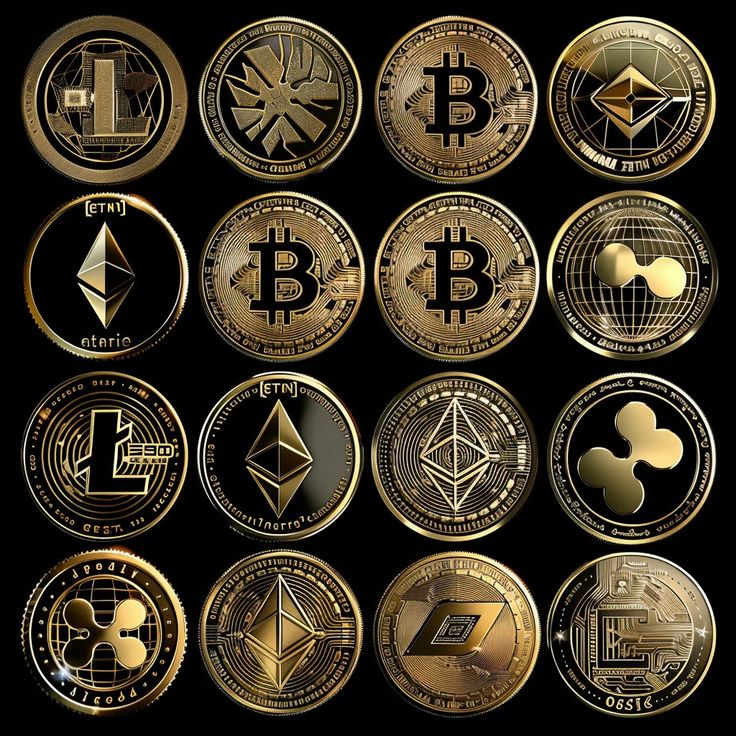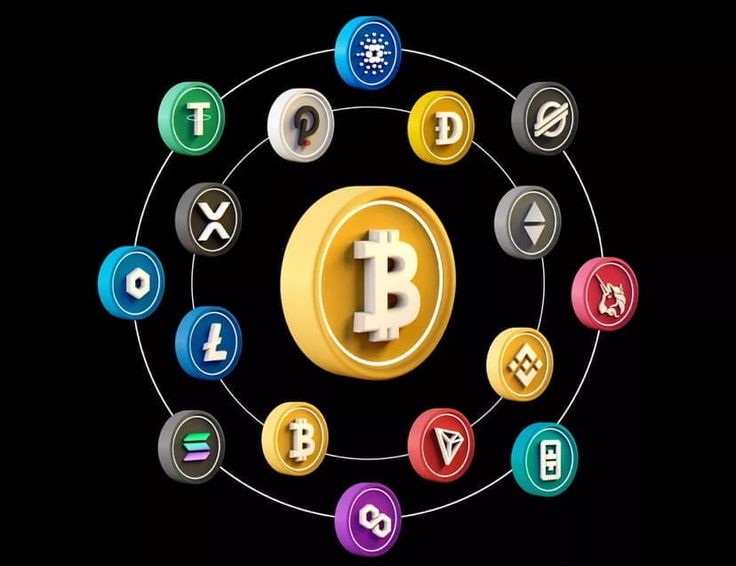You’ve probably heard a lot about cryptocurrencies by now, especially names like Bitcoin. It’s definitely the big star that started it all in the digital money world! Many people get their first taste of crypto by learning about Bitcoin, and for good reason – it’s the original. But here’s where the real adventure begins: there’s a huge, exciting world of other digital coins out there, often called “altcoins,” each with its own special purpose and unique flavor.
You might be wondering, “Why are there so many different kinds of cryptocurrencies beyond Bitcoin? Do they all do the same thing?” That’s a great question, and the answer is no, not at all! Think of it like apps on your smartphone. You have apps for talking to friends, apps for watching videos, apps for ordering food, and apps for playing games. Each one is designed for a different job. In the same way, many cryptocurrencies have their own special jobs or goals they’re trying to achieve in the digital world.
We’re going to take a friendly tour of some of the most common types of cryptocurrencies you’ll come across, after Bitcoin. We’ll explain what makes them unique, why they exist, and how they fit into the bigger picture of the digital economy. It’s all about helping you understand this fascinating space better.
1. Ethereum (ETH)
Ethereum (ETH), which is the second-largest cryptocurrency after Bitcoin. But Ethereum is quite different from Bitcoin because it’s much more than just a digital money for sending payments. Take Ethereum as a giant, worldwide computer network that can run special programs called “smart contracts.” What are smart contracts? Imagine an agreement that automatically carries out its terms when certain conditions are met, without needing a lawyer or a bank to oversee it. For example, a smart contract could automatically release funds to a seller once a buyer confirms they’ve received an item. This opens up a whole new world of possibilities!
Because of these smart contracts, Ethereum acts like a foundation or a building block for many other cool crypto projects. Lots of new digital applications, often called “decentralized apps” or “dApps,” are built on Ethereum’s network. It’s also the technology behind many of the exciting “Decentralized Finance” (DeFi) projects, which aim to recreate traditional financial services (like lending and borrowing) without banks, and the popular “NFTs” (Non-Fungible Tokens), which are unique digital collectibles like art or music. So, while Bitcoin is often seen as digital gold, Ethereum is more like the digital operating system for a new kind of internet.

2. Stablecoins
Now, let’s talk about Stablecoins. We know that crypto prices can jump around a lot, right? This constant up-and-down motion can make it tricky to use cryptocurrency for everyday shopping, or to keep your money steady if you want to avoid market swings. That’s where Stablecoins come in! They are a special type of cryptocurrency designed to hold a steady value. How do they do this? They usually achieve this by being “pegged” or tied to a real-world asset, like the US Dollar. For example, popular Stablecoins like Tether (USDT) and USD Coin (USDC) aim to always be worth exactly $1 US Dollar. This means if you hold 100 USDT, it should always be worth about $100 US Dollars. Another example is Dai (DAI), which is also pegged to the US dollar but uses other cryptocurrencies as collateral to maintain its stability.
Stablecoins are incredibly useful because they allow people to move money quickly in the crypto world without worrying about sudden price changes. They’re also a great way to “park” your crypto funds in a stable asset during times when the market is very wild, without having to convert back to traditional money.

3. Utility Tokens
Next, we have Utility Tokens. These are a bit like a special pass or a tool that gives you access to a specific service or feature within a particular crypto project or platform. They aren’t really meant to be a general form of money or a store of value.
Its like a special token that you need to buy unique items or unlock certain levels in a blockchain-based video game.If you wanted to pay for decentralized storage space on a network, you might use a utility token like Filecoin (FIL). Or, if you’re using a privacy-focused web browser that rewards you for viewing ads, you might earn and use Basic Attention Token (BAT) within that browser’s system. Another example is Chainlink (LINK), which helps connect real-world data to smart contracts. These tokens have a very specific “use” or “utility” within their own system. They’re not just about sending money; they’re about performing an action or getting a service.

4. Governance Tokens
Moving on, let’s look at Governance Tokens. These are a fascinating type of cryptocurrency because they give their holders a say in how a crypto project or its underlying network is run. If you own these tokens, you might get “voting rights.” This means you could vote on important decisions, like changes to the project’s rules, how its funds are used, or what new features should be added.
For example, if you hold Uniswap (UNI) tokens, you can vote on proposals that affect the Uniswap decentralized exchange. Similarly, holders of Compound (COMP) tokens can vote on changes to the Compound lending platform. It’s a bit like owning a tiny share in a company that gives you the right to vote on company matters. This concept is all about making crypto projects more decentralized and community-driven, allowing the people who use and support the project to have a direct voice in its future.

5. Meme Coins
Finally, we have Meme Coins. You’ve probably seen these pop up in the news or on social media, with names like Dogecoin (DOGE) or Shiba Inu (SHIB). These cryptocurrencies usually start as internet jokes or memes, gaining popularity through social media buzz and community excitement rather than groundbreaking technology or a clear, serious purpose. More recently, coins like Pepe (PEPE) and Bonk (BONK) have also gained attention in this category.
It’s important to understand that Meme Coins are generally driven by hype and trends. This means their prices can be extremely volatile and unpredictable. They can shoot up incredibly fast if a lot of people get excited about them, but they can also drop just as quickly. Because of this, it’s crucial to stress that Meme Coins are extremely risky and volatile. They are generally not recommended for serious investing for beginners, as they carry a much higher chance of losing your money compared to more established cryptocurrencies with clear uses.

Why So Many Types?
So, why are there so many different kinds of cryptocurrencies beyond just Bitcoin? It really boils down to one main reason: innovation. Different groups of people are trying to solve different problems or offer unique services in the digital world. Just like the internet expanded beyond simple websites to include social media, streaming, and online shopping, the crypto world is constantly growing and finding new uses for its technology. Each type of cryptocurrency represents a different approach or solution.
Important Tips for Exploring Beyond Bitcoin
As you start exploring these different types of cryptocurrencies, it’s super important to keep your financial safety in mind. Here are some key tips:
- Do Your Own Research (DYOR): This is the most important rule in crypto! Never buy any cryptocurrency just because someone else told you to, or because you saw it trending online. Always take the time to look into the project yourself. Understand what it does, who is behind it, and what its goals are.
- Understand the Risk: Every crypto has a different level of risk. A stablecoin is much less volatile than a meme coin, for example. Make sure you understand what you’re getting into before you invest.
- Diversify (Don’t Put All Eggs in One Basket): If you do decide to invest in different types of crypto, spread your money around. Don’t put all your investing funds into just one coin, especially a smaller, riskier one.
- Start Small: When you’re trying out a new type of crypto or a new investment, always start with a small amount that you’re comfortable losing.
- Connect to DCA: This is where our previous article, “Smart Crypto Investing: Dollar-Cost Averaging (DCA) for Beginners,” comes in handy! If you’re planning to invest in these different cryptocurrencies over time, using DCA is a fantastic strategy. It helps you manage the price swings by investing regularly, taking away the stress of trying to time the market. It’s a disciplined way to build your holdings in various coins.
- Secure Your Holdings: And don’t forget the lessons from our guide on “How to Safely Buy and Store Cryptocurrency: A Beginner’s Easy Guide.” Once you buy any cryptocurrency, make sure you’re storing it safely, whether it’s on a trusted exchange or, for larger amounts, in a secure cold wallet.
Your Growing Cryptocurrencies Knowledge!
You’ve now taken a big step in understanding the diverse world of cryptocurrency! It’s clear that it’s not just Bitcoin anymore; there are many different types of digital assets, each with its own purpose and potential. Knowing these differences helps you make smarter choices and feel more confident as you explore this exciting space.
Keep learning, keep asking questions, and always prioritize your financial safety. The more you understand, the better equipped you’ll be to navigate the digital economy and make informed decisions about your investments.



